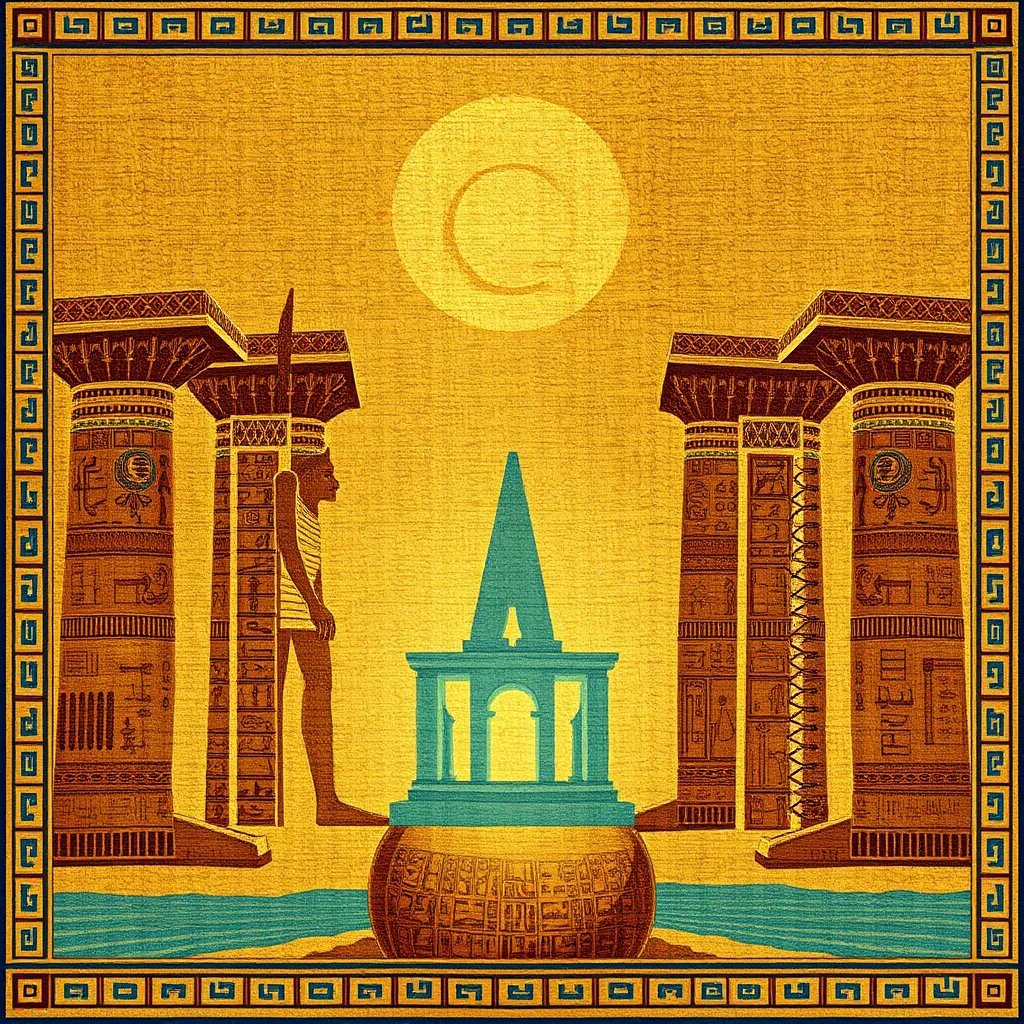The Duat: A Tapestry of Myths and Legends
I. Introduction to the Duat
The Duat, in ancient Egyptian mythology, is a complex and multifaceted realm that represents the underworld and the afterlife. It holds immense significance in the belief systems of ancient Egyptians, serving as both a place of judgment and a transitional phase for souls. The Duat is not merely a destination; it is a journey that reflects the values, fears, and aspirations of a civilization that deeply revered the afterlife.
This article explores the myths and legends associated with the Duat, revealing how they shaped the understanding of life, death, and existence in ancient Egypt. By delving into these narratives, we can appreciate the rich tapestry of beliefs that informed the practices surrounding death and the afterlife.
II. The Geography of the Duat
The Duat is often depicted as a vast and intricate landscape, comprised of various realms and regions that souls must traverse. Each area serves a specific purpose and conveys symbolic meanings important to ancient Egyptian culture.
- The Fields of Aaru: A paradise where the blessed souls enjoy eternal bliss.
- The Hall of Two Truths: The place where souls are judged based on their deeds in life.
- The Lake of Fire: A region for the wicked, where they face punishment.
These regions are often connected symbolically to the physical world, particularly the Nile River, which was considered the lifeblood of Egypt. The river not only nourished the land but also served as a metaphorical pathway connecting the living to the afterlife.
III. Deities of the Duat
Central to the Duat are several key deities, each playing a vital role in the afterlife journey of souls.
- Osiris: The god of the afterlife and resurrection, Osiris is a symbol of eternal life. He presides over the judgment of souls and offers hope for rebirth.
- Anubis: The jackal-headed god associated with mummification and the protection of graves. Anubis guides souls through the Duat and oversees the Weighing of the Heart ceremony.
- Ra: The sun god, who travels through the Duat at night, illuminating the darkness and symbolizing the cycle of life, death, and rebirth.
These deities are not just figures of worship; they embody the attributes and values that the ancient Egyptians held dear, illustrating the interconnectedness of gods and the souls of the deceased.
IV. The Journey Through the Duat
Upon death, the soul embarks on a journey through the Duat, facing a series of trials and challenges. This journey is fraught with dangers, including various monsters and obstacles that the deceased must overcome to reach the afterlife.
- Monsters: Creatures like the serpent Apep, representing chaos, threaten the souls during their journey.
- Guidance: Deities like Anubis provide assistance, ensuring that the soul remains on the right path.
The journey culminates in the Weighing of the Heart ceremony, where the heart of the deceased is weighed against the feather of Ma’at, symbolizing truth and justice. If the heart is lighter than the feather, the soul is deemed worthy and granted passage to the Fields of Aaru; if heavier, it faces annihilation by the devourer, Ammit.
V. Myths and Legends Associated with the Duat
The Duat is steeped in rich narratives that elaborate on the beliefs surrounding death and rebirth.
- The story of Osiris: Osiris, killed by his brother Set and resurrected by his wife Isis, symbolizes the eternal cycle of death and rebirth, embodying the hope for immortality.
- The journey of Ra: Every night, Ra travels through the Duat, battling darkness and chaos, and is reborn at dawn, symbolizing the perpetual cycle of life.
Additionally, lesser-known myths, such as those of the 12 hours of the night, elaborate on the trials that the sun god faces, highlighting the theme of perseverance against chaos.
VI. Art and Literature Depicting the Duat
The Duat has been extensively represented in ancient Egyptian art and literature, offering insight into the culture’s beliefs and practices.
- Texts: The Book of the Dead, a collection of spells and prayers, guides souls through the Duat, providing instructions for navigating its challenges.
- Artistic representations: Tomb paintings and carvings depict the journey through the Duat, illustrating both the trials faced and the rewards of a successful passage.
These artistic and literary works have been crucial for modern scholars and enthusiasts in understanding the complexities of the Duat and its significance in ancient Egyptian culture.
VII. The Duat in Modern Interpretation
Interest in ancient Egyptian mythology has surged in recent years, leading to a resurgence of the Duat in contemporary literature and media.
- Literature: Modern novels and stories often incorporate elements of the Duat, inspiring new interpretations of ancient myths.
- Media: Films and documentaries depicting ancient Egypt frequently explore the themes of the Duat, bringing ancient beliefs to a wider audience.
Furthermore, the Duat has found a place in modern spiritual practices, with some individuals drawing inspiration from its symbolism of transformation and the afterlife.
VIII. Conclusion
The Duat remains a powerful symbol in ancient Egyptian mythology, representing not only the afterlife but also the values of truth, justice, and resurrection. Its rich tapestry of myths and legends continues to resonate with people today, reflecting the enduring legacy of ancient Egyptian beliefs and practices.
As we explore the intricate narratives surrounding the Duat, we are invited to reflect on our own beliefs about life, death, and what may lie beyond. The myths of the Duat serve as a reminder of a civilization’s profound understanding of existence, encouraging further exploration into the mysteries of ancient Egyptian spirituality.




